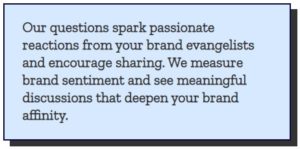
PatientConnect Video was launched by Healthgrades earlier this month to provide not only education video programming about specific health conditions, but to then connect patients with qualified, local specialists. According to the news release, “PatientConnect Video eliminates the uncertainty for patients who don’t know where to access care.”
Coupling proprietary AI technology with their innovative solution suite, this online video solution provides content along with relevant healthcare provider information. “For example, patients watching video content about rheumatoid arthritis are dynamically provided with listings of rheumatologists closest to their location along with the physicians’ accepted insurance, patient reviews, contact information and more.”
According to John Mangano, Senior Vice President, Business Intelligence for Healthgrades, this takes things a step further than the usual ‘ask your doctor for more information’ instruction typically found in ads by actually “helping the patient find their doctor. After viewing an ad online, Healthgrades delivers individually localized contact information, along with patient reviews of the provider, so each patient can connect with the right practitioner.”
 To help combat opioid addiction, PatientPoint® collaborated with Shatterproof – a nonprofit organization focused on ending the stigma of addiction and improving addiction treatment – to create a powerful opioid education program at the point of care. It launched nationwide in October 2017 across the digital PatientPoint engagement platform, reaching an estimated 15 million patients and caregivers each month in waiting rooms, exam rooms, and in the physician back office. The content is designed to increase the awareness of opioid addiction and encourage doctor-patient discussions about other treatment options.
To help combat opioid addiction, PatientPoint® collaborated with Shatterproof – a nonprofit organization focused on ending the stigma of addiction and improving addiction treatment – to create a powerful opioid education program at the point of care. It launched nationwide in October 2017 across the digital PatientPoint engagement platform, reaching an estimated 15 million patients and caregivers each month in waiting rooms, exam rooms, and in the physician back office. The content is designed to increase the awareness of opioid addiction and encourage doctor-patient discussions about other treatment options. The Tylt is the fastest growing social polling and opinion
The Tylt is the fastest growing social polling and opinion  For healthcare campaigns, the process begins with locating the right patient and encouraging them to share their opinion on a personally meaningful health topic. Patient advocacy becomes democratized when declared sentiments, informed by supporting evidence, are shared socially. By bringing structure to health conversations as they trend across social, patient insights can be identified and addressed in the next wave of interactive content, positioning the brand as a partner in the journey to better health.
For healthcare campaigns, the process begins with locating the right patient and encouraging them to share their opinion on a personally meaningful health topic. Patient advocacy becomes democratized when declared sentiments, informed by supporting evidence, are shared socially. By bringing structure to health conversations as they trend across social, patient insights can be identified and addressed in the next wave of interactive content, positioning the brand as a partner in the journey to better health. In “The Ups and Downs Campaign,” upon entering the elevator and pressing the button to her floor, all of the button lights begin to flicker rapidly. The elevator plummets down, with the doors then opening to show her crying on the edge of her bed, before surging back up high, where the doors open on a scene of her arguing with a man. The elevator screen then shows the arrows pointing in both directions, as the doors open to reveal her clothes shopping in a panicked state. After taking VRAYLAR, the elevator ride steadies before stopping in her current life moment where she cleans up the mess in her bedroom, and then takes a smooth elevator ride to meet her date in the lobby.
In “The Ups and Downs Campaign,” upon entering the elevator and pressing the button to her floor, all of the button lights begin to flicker rapidly. The elevator plummets down, with the doors then opening to show her crying on the edge of her bed, before surging back up high, where the doors open on a scene of her arguing with a man. The elevator screen then shows the arrows pointing in both directions, as the doors open to reveal her clothes shopping in a panicked state. After taking VRAYLAR, the elevator ride steadies before stopping in her current life moment where she cleans up the mess in her bedroom, and then takes a smooth elevator ride to meet her date in the lobby. Three new member companies have joined the Point of Care Communication Council (PoC3), as announced this month: CoverWrap Communications, Rx EDGE Media Network, and Targeted Media Health (a division of Meredith Corporation). In addition to “[helping] influence and amplify the future of POC marketing. In the near term, they plan to immerse into the PoC3 Verification & Validation Guidance effort and the establishment of measurement best practices.”
Three new member companies have joined the Point of Care Communication Council (PoC3), as announced this month: CoverWrap Communications, Rx EDGE Media Network, and Targeted Media Health (a division of Meredith Corporation). In addition to “[helping] influence and amplify the future of POC marketing. In the near term, they plan to immerse into the PoC3 Verification & Validation Guidance effort and the establishment of measurement best practices.” The custom campaign, In These Rooms, launched this month to help transform the point of care space to a more empathetic “moments of care” image. Created by Outcome Health, a
The custom campaign, In These Rooms, launched this month to help transform the point of care space to a more empathetic “moments of care” image. Created by Outcome Health, a  To provide a well-rounded representation of potential patient and caregiver experiences with their healthcare professionals, the creative includes: “a waiting room, a pediatrician visit for an asthma check-up, an OB-GYN ultrasound room to hear a baby’s first heartbeat, a standard exam room for a long-overdue physical, and a doctor’s office to learn about treatment results.”
To provide a well-rounded representation of potential patient and caregiver experiences with their healthcare professionals, the creative includes: “a waiting room, a pediatrician visit for an asthma check-up, an OB-GYN ultrasound room to hear a baby’s first heartbeat, a standard exam room for a long-overdue physical, and a doctor’s office to learn about treatment results.” Let’s start by understanding where pharma marketing is on the analytics adoption curve.
Let’s start by understanding where pharma marketing is on the analytics adoption curve. The Department of Health and Human Services (HHS) filed a notice of appeal on August 21st in response to the July ruling that blocked price disclosure in TV drug advertising. Handed down by Judge Amit Mehta of the US District Court, he ruled against the measure, stating: “HHS lacks the statutory authority under the Social Security Act to adopt the WAC [wholesale acquisition cost] Disclosure Rule.” At the time of his decision, HHS seemed to hint that they were going to file an appeal, saying they would “work with the Department of Justice on next steps related to the litigation.”
The Department of Health and Human Services (HHS) filed a notice of appeal on August 21st in response to the July ruling that blocked price disclosure in TV drug advertising. Handed down by Judge Amit Mehta of the US District Court, he ruled against the measure, stating: “HHS lacks the statutory authority under the Social Security Act to adopt the WAC [wholesale acquisition cost] Disclosure Rule.” At the time of his decision, HHS seemed to hint that they were going to file an appeal, saying they would “work with the Department of Justice on next steps related to the litigation.” Ogilvy Health, a part of Ogilvy, has promoted seven creative team members in the agency’s New Jersey and New York offices. Expressing her excitement for the department’s growth was Ogilvy Health North America’s Chief Creative Officer, Samantha Dolin: “I couldn’t be more thrilled to see this group acknowledged for their respective talents and collective leadership. Their brilliant contributions every day help to elevate the entire Ogilvy Health team and the new roles they are taking on will allow their impact to be felt more broadly across so many of our key accounts. As they continue to drive meaningful results and delight our clients, I am looking forward to building our next creative chapter with this group of tremendously talented individuals.”
Ogilvy Health, a part of Ogilvy, has promoted seven creative team members in the agency’s New Jersey and New York offices. Expressing her excitement for the department’s growth was Ogilvy Health North America’s Chief Creative Officer, Samantha Dolin: “I couldn’t be more thrilled to see this group acknowledged for their respective talents and collective leadership. Their brilliant contributions every day help to elevate the entire Ogilvy Health team and the new roles they are taking on will allow their impact to be felt more broadly across so many of our key accounts. As they continue to drive meaningful results and delight our clients, I am looking forward to building our next creative chapter with this group of tremendously talented individuals.”






 HCB Health announced the hiring of ten new team members under its BioPharma division and an additional four to support the agency across all groups. Of the new hires, three will take on roles in senior management: Gabriel Cangiano, Mark Davis, and Travis Waggoner.
HCB Health announced the hiring of ten new team members under its BioPharma division and an additional four to support the agency across all groups. Of the new hires, three will take on roles in senior management: Gabriel Cangiano, Mark Davis, and Travis Waggoner.